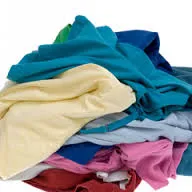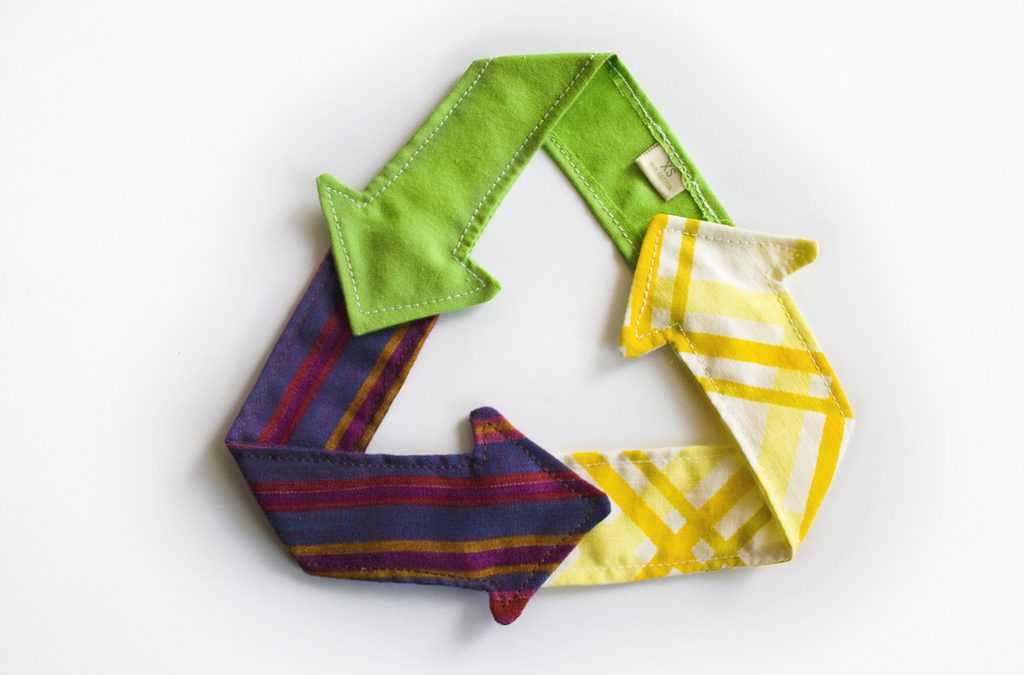


Textile recycling is the method of reusing or reprocessing used clothing, fibrous material and clothing scraps from the manufacturing process.
Fleece, flannel, corduroy, cotton, nylon, denim, wool, and linen. What can you do with these fibers when you’re finished wearing them, sleeping on them, or draping them over your windows? One way to benefit both your community and the environment is to donate used textiles to charitable organizations. Most recovered household textiles end up at these organizations, who sell or donate the majority of these products. The remainder go to either a textile recovery facility or the landfill.
Textiles and leather recycling categories
● Wool Recycling
● Burlap, Jute, and Sisal Recycling
● Polyester and Polyester Fiber Recycling
● Nylon and Nylon Fiber Recycling
● Other Synthetic Fiber Recycling
● Carpet Recycling
● Rags and Wipers
● Used and Recycled Bags
● Used Clothing
● Used Footwear
● Textile Recycling Employment

Just the Facts
● An estimated 13.1 million tons of textiles were generated in 2011, or 5.2 percent of total municipal solid waste (MSW) generation.
● An estimated 13.9 percent of textiles in clothing and footwear and 17.6 percent of items such as sheets and pillowcases was recovered for export or reprocessing in 2011.
● The recovery rate for all textiles was 15.3 percent in 2011, 2.0 million tons.
Collecting Textiles
At present the consumer has the option of putting textiles in ‘clothes banks’, taking them
to charity shops or having them picked up for a jumble sale
Textiles typically are not sorted at the point of collection, but keeping them clean and free from moisture is important. Once clothes get wet, stained, or mildewed, they cannot be sold for reuse. To prevent contamination, many charities offer enclosed drop-off boxes for clothing or other fabrics. Communities with curbside collection for textiles should educate donors on how to properly bag clothing.
Process
Clothing fabric generally consists of composites of cotton (biodegradable material) and synthetic plastics. The textile’s composition will affect its durability and method of recycling.
Fiber reclamation mills grade incoming material into type and color. The color sorting means no re-dying has to take place, saving energy and pollutants. The textiles are shredded into “shoddy” fibers and blended with other selected fibers, depending on the intended end use of the recycled yarn. The blended mixture is carded to clean and mix the fibers and spun ready for weaving or knitting. The fibers can also be compressed for mattress production. Textiles sent to the flocking industry are shredded to make filling material for car insulation, roofing felts, loudspeaker cones, panel linings and furniture padding.
For specialized polyester based materials the recycling process is significantly different. The first step is to remove the buttons and zippers then to cut the garments into small pieces. The shredded fabric is then granulated and formed into small pellets. The pellets are broken down polymerized and turned into polyester chips. The chips are melted and spun into new filament fiber used to make new polyester fabrics.
Outlets for Waste Textiles
All collected textiles are sorted and graded by highly skilled, experienced workers, who are able to recognize the large variety of fiber types resulting from the introduction of synthetics and blended fiber fabrics. Once sorted the items are sent to various destinations as outlined below:
| WEARABLE TEXTILES | |
| SHOESResold abroad in countries like Pakistan, India, Africa and East European countries. | CLOTHESResold in the U.K. and abroad. Oxfam’s Wastesaver provides clothes to Mozambique, Malawi or Angola for emergency use, as well as providing warm winter clothing to former Yugoslavia, Albania, Afghanistan and Northern Iraq. |
| UNWEARABLE TEXTILES | ||
| TROUSERS, SKIRTS, ETC.Sold to the ‘flocking’ industry. Items are shredded for fillers in car insulation, roofing felts, loudspeaker cones, panel linings, furniture padding etc. | WOOLLEN GARMENTS Sold to specialist firms for fibre reclamation to make yarn or fabric. | COTTON AND SILK Sorted into grades to make wiping cloths for a range of industries from automotive to mining, and for use in paper manufacture. |
● Recovery and recycling provide both environmental and economic benefits. Textile recovery:
● Reduces the need for landfill space. Textiles present particular problems in landfill as synthetic (man-made fibres) products will not decompose, while woollen garments do decompose and produce methane, which contributes to global warming.
● Reduces pressure on virgin resources.
● Aids the balance of payments as we import fewer materials for our needs.
● Results in less pollution and energy savings, as fibres do not have to be transported from abroad.
What You Can Do
● Take your used clothes to a textile bank. Contact the recycling officer in your local authority if there are no banks in your area and ask why; they may collect textiles through other means. Alternatively you can take used clothing to local charity shops.
● Give old clothes/shoes/curtains/handbags etc. to jumble sales. Remember to tie shoes together: part of the 6% of textiles which is wastage for merchants are single shoes.
● Buy second-hand clothes – you can often pick up unusual period pieces! If bought from a charity shop, it will also benefit a charity.
● Buy things you are likely to wear a long time – a dedicated follower of fashion can also be a green one if items are chosen carefully.
● Look for recycled content in the garments you buy. This should be on the label, though at present there is no conventional marking scheme and some companies do not always advertise the recycled content.
● Buy cloth wipers instead of disposable paper products as the product can be used repeatedly.


